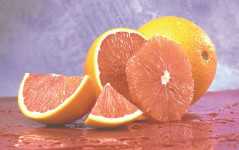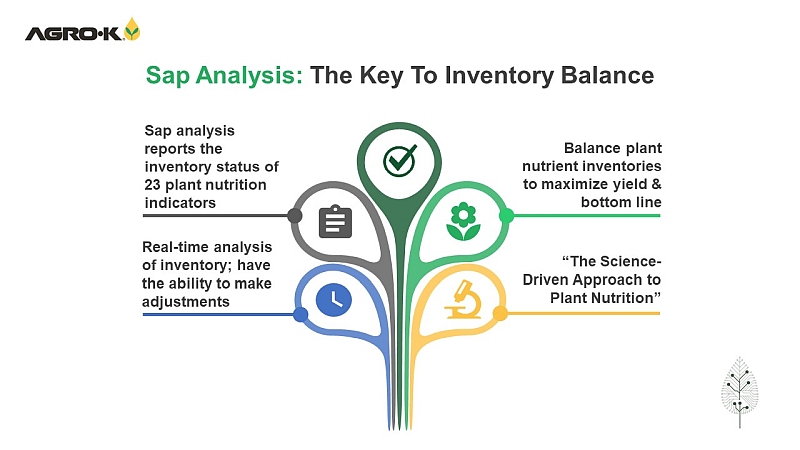Growers Take New Notice Of Navel Oranges

It’s no secret that Florida growing conditions are ideal for the production of high-quality grapefruit with great eating quality and juice content. Over the past few decades, Florida grapefruit growers have responded to consumer demand by planting more colored grapefruit varieties, with an increased commitment to darker reds. Consumers show a preference for the red-pigmented varieties; and increasing knowledge of the health benefits of lycopene may contribute to this trend. Satisfied with overall quality, grower interest has focused mainly on varieties offering an expanded range of maturities. There has been some replanting of acreage, as growers gain confidence and renew their commitment to the category.
Though Florida was once the primary supplier of tangerines and easy peel specialty fruit to the American market, ferocious competition from consumer friendly California and off-shore mandarins has eroded Florida’s market share. Loss of share has fueled efforts to restore Florida’s competitive position in the “convenience citrus” segment through in-state breeding efforts and evaluation of non-Florida varieties. “Citrus Nursery Source” readers are aware of recent progress in this area and are awaiting the entrance of the first mandarin selections into the innovative UF/IFAS Fast Track system. The US Early Pride Tangerine (a USDA selection) is now commercially available and is garnering the attention of growers interested in an early market position.
Oranges Of A Different Color
Florida’s fresh orange production is a more complex case. The past three years have shown a relatively steady demand for fresh Florida oranges. Traditional round orange varieties, many of which were developed for the processed sector, continue as the dominant varieties due to supply and availability. Though Florida is not known as a typical navel orange climate, navels are valued by commercial, fund-raising and gift packers. Navel plantings are on the rise. Though Washington and Glenn will remain the primary navels for the foreseeable future, there is a strong interest in the Cara Cara (red) navel.
The Cara Cara is reportedly a cross of the Washington navel and Bahia navel, discovered at the Hacienda de Cara Cara in Valencia, Venezuela in 1976 (Cara Cara translates to “Beloved” in Italian). The Cara Cara navel has been available to Florida growers since 1987. Surging demand for Cara Cara is a recent phenomenon, as this variety had enjoyed limited early success in Florida, with many growers abandoning it for greener pastures. Some growers expressed frustration with lower-than-average yields, susceptibility to dryness (particularly in older trees), and inability to optimize tree health and fruit quality. Still, some had been able to produce consistently good quality Cara Cara, only to face lackluster consumer demand and retail confusion. The Cara Cara was clearly not a blood orange, but it is not a traditional white (blonde) navel either.
Demand Is In The Details
There is no shortage of opinions about the cause of increased demand for Cara Cara navels. Here are some of the reasons offered:
• Navel oranges are sold at retail with little or no differentiation. Washington, Glenn, Myakka, Summerfield, Dream, and Lane are all sold under the generic label of “navel.” However, due to its unique characteristics, the Cara Cara (or red navel) is sold under its own name. It stands out. Florida growers who are looking for a differentiated product — and who are waiting on the specialty varieties — are hedging their bets by looking at Cara Cara. It’s a known entity. People view Cara Cara as a specialty orange.
• The pink color that once confused consumers is now viewed favorably. It’s a novelty of sorts.
• Some gift fruit shippers and fund-raisers report a price differential for Cara Cara over traditional navels, but this is not consistently supported in the commercial realm. Several California companies report higher returns for Cara Cara.
• Sunkist has maintained a steady commitment to the Cara Cara and successfully built an identity for the variety. Their marketing plan has removed confusion in the marketplace. They have placed a high emphasis on quality. As a result, California Cara Cara acreage has doubled since 2004.
• Whereas the unique flavor, texture, and appearance used to be an impediment, consumers are now eager for something unique. The Cara Cara is described as having richer and more complex flavor than standard navels.
• The Cara Cara provides retailers the opportunity
for diversification.
• Some Florida growers struggle to achieve internal color with navels, as compared to more arid climates. Because the pigment in Cara Cara comes from lycopene, Florida can achieve a nice consistent color. Additionally, Florida Cara Cara mature earlier than California, so there is an attractive market window.
• Finally, much has been written about the health benefits of lycopene. Whether this contributes to demand is not known, but it can’t hurt and has been included in several recent promotions.
The extent to which Florida will participate in this market remains unknown. Growers mention Cara Cara as a variety of interest. Time will tell whether it translates to tree orders.










